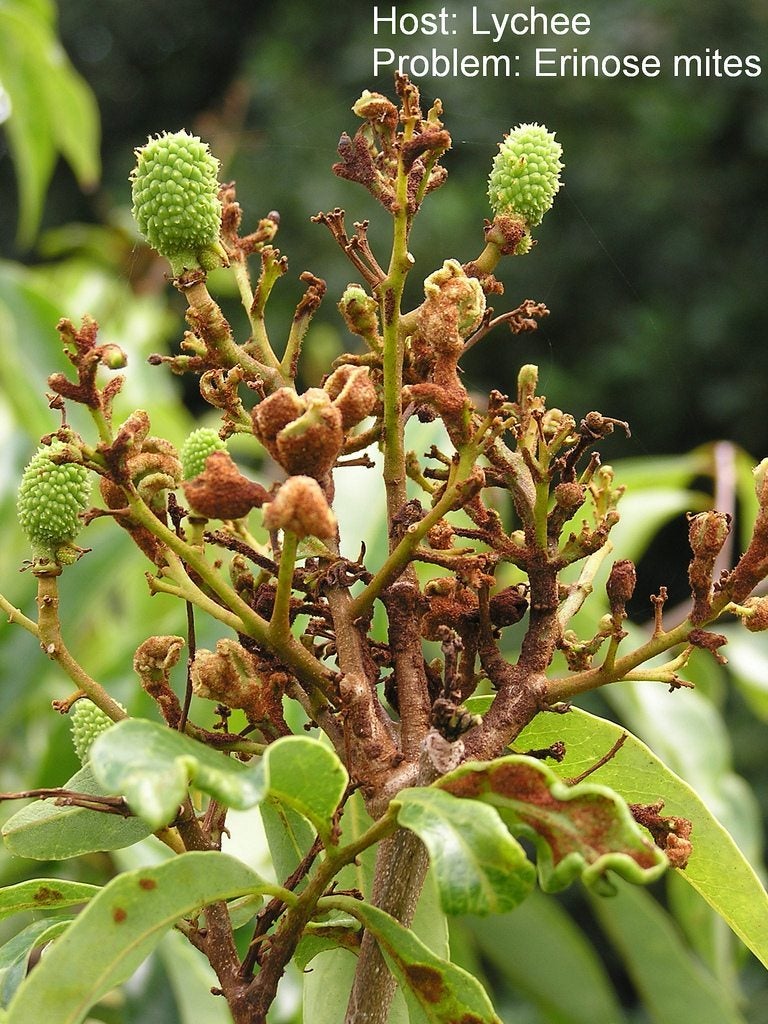Problems With Lychee Trees: Common Lychee Pests And Diseases


Lychee is a beautiful tree with a rounded canopy and deep green foliage. The reddish-colored fruit are both sweet and tart. Lychee trees are relatively easy to grow in plenty of sun and well-drained soil, and some people in northern climates even grow this warm-weather plant indoors. However, the tree isn’t immune to its share of problems. Read on to learn about potential problems with lychee trees and how to keep lychees healthy.
Common Lychee Problems
The most common issues with these trees include lychee pests and diseases. Here are the most likely ones to affect your plant:
Lychee tree pests
Mites (leaf curl mites, red spider mites, etc.): You can normally spray mites with Neem oil or insecticidal soap to eradicate them. Citrus aphid: Spray citrus and other aphids with Neem oil or insecticidal soap if they become a problem. A blast of water on the tree can help knock them off too. Caterpillars: Spray caterpillars with dormant oil in late winter to smother eggs before they hatch. You can also spray affected lychee trees with Bt (Bacillus thuringiensis), a naturally occurring bacteria. Fruit-piercing moth: The best way to combat fruit-piercing moths is to harvest lychee fruit as early as possible. Pick up rotten and fallen fruit. If the tree is small, cover it with netting. Leaf eating beetles (Japanese beetles, green beetles, etc.): Spray beetles with a permethrin-based insecticide.
Lychee Diseases
Diseases of lychee tree include anthracnose, root rot, and red algae. Most are the result of improper watering (either too much or too little) or excessive use of fertilizer. Consult experts at your local cooperative extension office for more information.
How to Avoid Most Lychee Issues
Lychee trees are relatively drought tolerant, but young trees should be watered regularly until they’re well established. Proper watering will help prevent many common lychee issues, including fruit split. Withhold water from mature trees for six to eight weeks before the trees bloom. However, if weather conditions are hot and dry, you may need to water lightly during this time. Plant two or three trees in close proximity to assist in pollination and increase fruit set. Allow 20 to 30 feet (6 to 9 m.) between each tree. Maintain a barrier of at least 2 or 3 feet (0.5 to 1 m.) between lychee trees and lawn grass. Avoid hitting the bark with a lawn mower or weed trimmer, as damage to the trunk can weaken the tree. Apply a thin layer of mulch around the tree, extended to the dripline, but always allow a 6-inch (15 cm.), mulch-free barrier around the base of the trunk.
Sign up for the Gardening Know How newsletter today and receive a free copy of our e-book "How to Grow Delicious Tomatoes".

A Credentialed Garden Writer, Mary H. Dyer was with Gardening Know How in the very beginning, publishing articles as early as 2007.